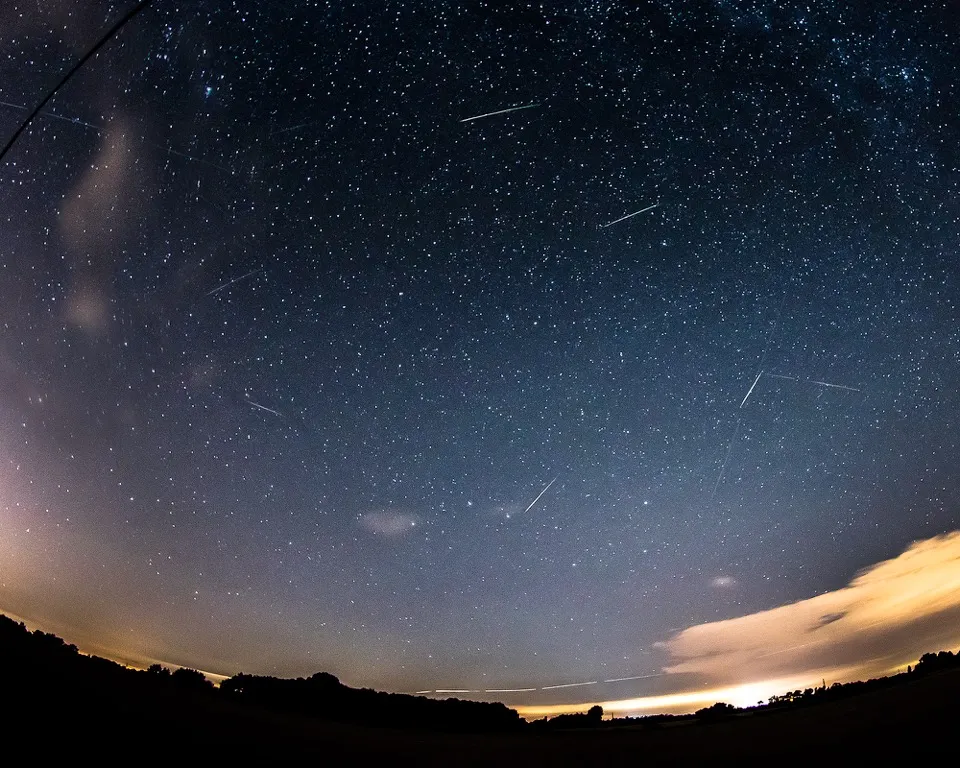12 August brings the peak of the Perseids meteor shower, a fantastic opportunity to see and photograph a high rate of bright meteors and fireballs; fragments of comet Swift-Tuttle meeting their fiery end at about 55 km per second in the upper mesosphere. Royal Observatory Greenwich astronomer Tom Kerss shares his top tips about how to get the perfect shot in this extract fromskyatnightmagazine.com- you can read the full article as well as a few extra wise words of advicehere.
- DSLR cameras offer the most flexibility for wide-field photography of the sky. Interchangeable lenses allow you to select the best equipment for the job. Narrow fields of view will lower the likelihood of capturing a meteor in any given exposure, so use your widest lens on its widest setting. Focal lengths between 10-24mm are ideal.
- As with all low-light and time-lapse photography, a tripod is essential. Better yet, you can use compactequatorial tracking systemsdesigned for light payloads to keep your stars nice and sharp over long exposures.
- Use an intervalometer to do the boring bit – taking continuous exposures back-to-back with a large area of sky in view. Make sure your memory card has plenty of space, and set your camera to shoot RAW images.
- Focusing on stars can be tricky, but most cameras have a liveview zoom feature, allowing you to manually focus until a bright star appears as pin-sharp as possible. Bear in mind that most lenses focus ‘beyond infinity’ for mechanical reasons, so you can’t rely on the focus dial entirely. You’ll also find that stars at the edge of the field appear much less point-like, but the edges can be cropped out later.

- You should experiment with the exposure settings until you get pleasing results for your local sky conditions, and camera and lens combination. Most cameras give best overall long exposure results between ISO 800-3200, but how bright your photo appears will of course depend sensitively on the exposure time and the photographic speed of the lens. If your lens is wide, with a maximum aperture of F/4 or faster, you can rely on 15-30 second exposures to produce sharp stars on a static tripod, whilst ensuring meteors in view will be conspicuous in the final image. Controlling the sky brightness in light-polluted images should also be a consideration, as a blown-out sky will reduce the contrast of fainter meteors.
- In general, you should target the highest ratio of exposure to on-board camera processing, keeping the delay between images as short as possible. Consider turning off your camera’s on-board long-exposure noise reduction to increase the rate of images you can take. Fewer images means a lower likelihood that your camera is gathering light at the critical moment that a brilliant fireball blazes in view. You can take steps to clean up noise with software afterwards.
The Perseids, like any great meteor shower, is an excellent opportunity to capture a unique and dramatic photo for your collection.
For more tips on how to photograph the night sky check out theseastrophotography guidesonskyatnightmagazine.co.uk.
Good luck and happy hunting!
Follow Science Focus onTwitter,Facebook, Instagramand Flipboard
